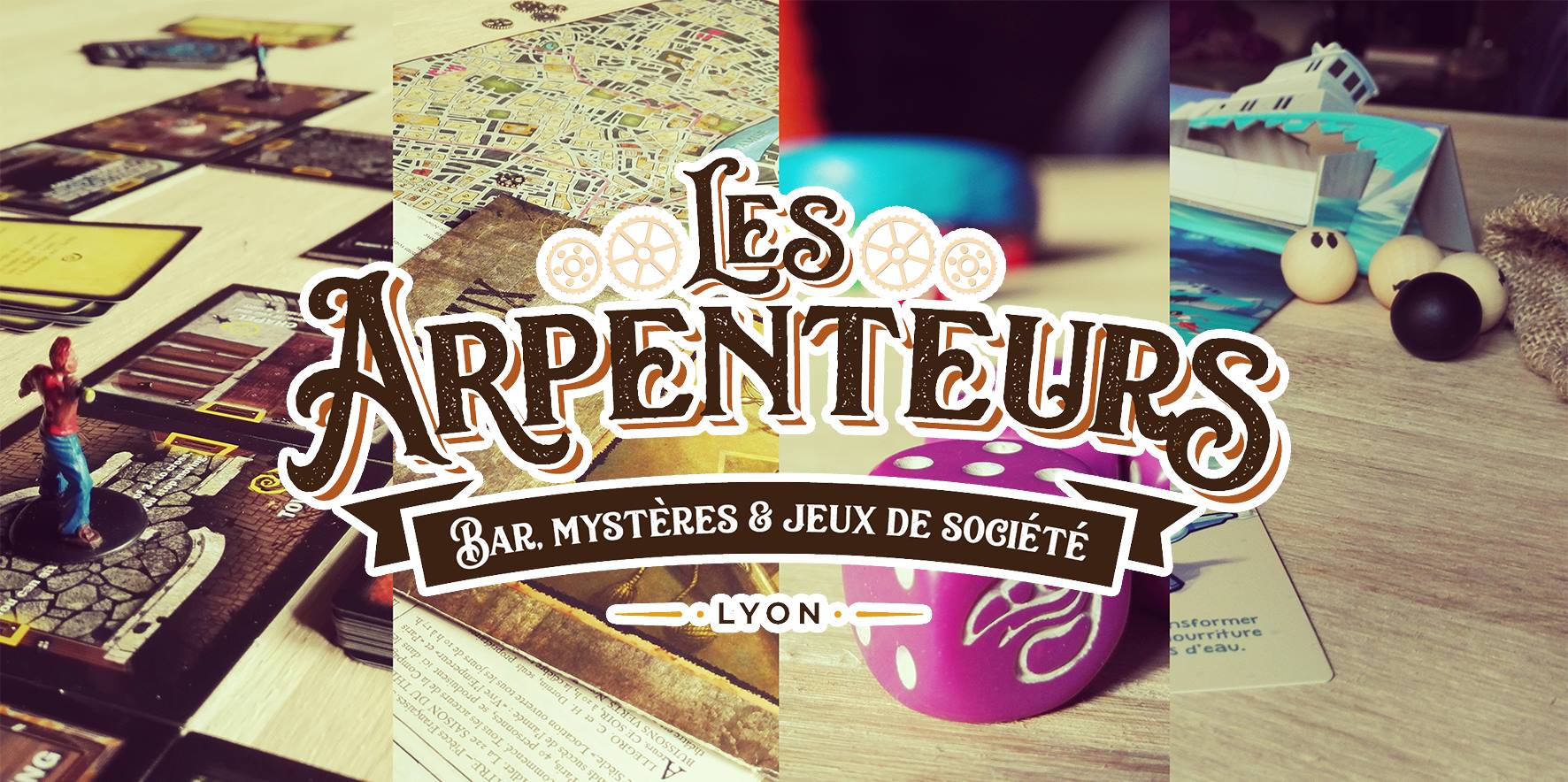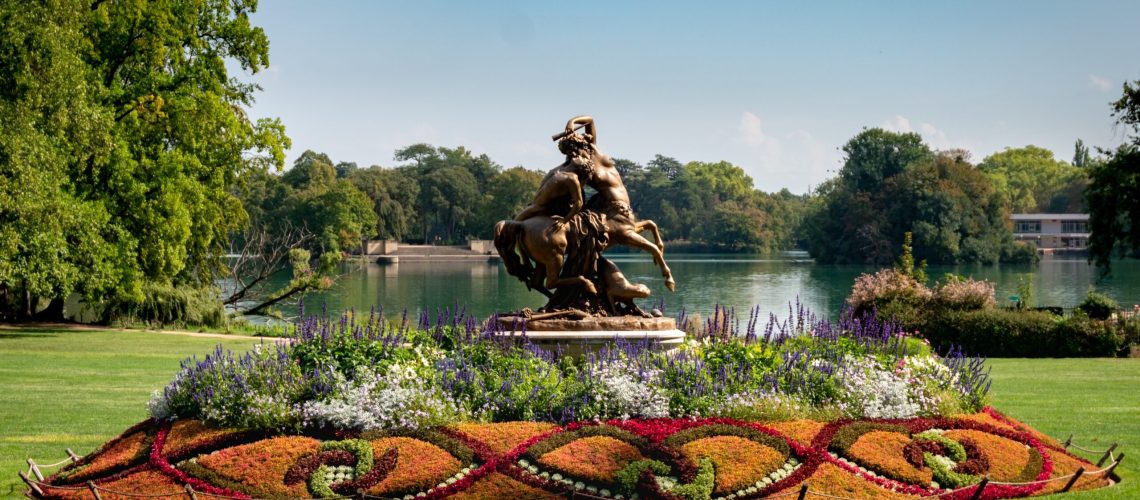
Join The Lyon lovers
Subscribe to the only weekly events newsletter in Lyon.
Get the best events and tips for discover Lyon like a local!


Reading time:
The sun finally begins to peek out from behind the clouds, and the winter cold starts to become a distant memory. This mainly means one thing in Lyon: Sunday at the park! In fact, most activities are closed on Sundays, and much of the local population flocks to the parks or green areas of the city to enjoy the good weather.
It’s not uncommon for a Lyonnais to spend the entire Sunday at the park, indulging in picnics, aperitifs, outdoor games, or reading in the shade of the park’s large trees. The parks are actively used by the city’s residents. It’s not unusual to see hammocks brought from home, tables carefully set up, and temporary structures for volleyball games or tightropes appearing in every green corner.
Although some activities are prohibited in the parks (barbecues, for obvious safety reasons!), remember that many activities are allowed and widely tolerated.
To help you discover and choose which park to visit, I’ve put together a guide to the city’s parks to better meet your needs. Each park has its own characteristics, advantages, and disadvantages.
The city’s three main parks are: Parc de la Tête d’Or (center-north), Parc de Gerland (south), and Parc Blandan (east).
In my guide, I’ve included the city’s three main parks (with 3 extra bonus locations!). So let’s start with the first episode of the special “Parks of Lyon,” dedicated to the city’s most famous park!

Certainly, the park not to be missed if you’re visiting the city. Its 117 hectares stretch along the banks of the Rhône, placing it right in the center (so it’s convenient to reach on foot from downtown). With its 117 hectares, it’s the largest urban park in France.
Inside, there are numerous spaces to visit dedicated to all types of audiences, with a special focus on children. A true green monument of the city, it was created in the 19th century under the impetus of Mayor Vaïsse. Completed in 1861, it was opened a year later. The zoo was opened in 1865, while the botanical garden opened in 1887, and the rose garden in 1961. The park is constantly being renewed, as demonstrated by the Asian forest, opened in the zoo in 2021, which spans 4000 square meters and now houses over 20 species, 11 of which are endangered, with a total of 80 specimens just in this area of the park. Don’t forget to say hello from me to the Tapir, found in this area and, to me, the most beautiful animal in the entire zoo!
The park is suitable for all types of audience. Athletes use it mainly in the morning and evening, families on Sundays, tourists and locals… always!
Given its location, it is very popular, which makes it, for example, very safe if you want to exercise alone or if you feel like mingling with the local population that floods it on Sundays at the first rays of sunshine.
The numerous vintage games for children are wonderful, such as the “pedal horses” that simulate horse races with bicycles for children featuring the profile of a horse at the front, or the historic Bayol carousel from 1895 (only 3 other working models still exist in France!). Definitely not to be missed are the zoo, which is completely free, and especially the historic greenhouses. We’re talking about 6,500 square meters of greenhouses with 16,000 plant species, built in metal and glass in 1880. At 21 meters high, it’s the tallest in France. There are several, so be sure not to miss any, like the house of cacti or carnivorous plants. The little ones can also enjoy mini quad bikes, mini go-karts, and even mini electric boats, suitable for children aged 3 to 12, which they can safely operate!
Running, picnicking, group sports activities (soccer, volleyball, etc.), visiting the zoo and historic greenhouses. You can explore the park on a little train or go pedal boating or motor boating on its huge lake.

Compared to other parks, it has some more traditional refreshment points (bars, creperies, etc.) with a beautiful view of the lakeshore (the only park with this option in Lyon).
It can be a bit crowded (don’t expect Sunday forest silence), so if you’re seeking absolute calm and peace, you might want to head to other parks (Gerland Park is highly recommended in this case).
The park’s name comes from an ancient legend according to which the Crusaders hid a large treasure here, including a golden head of Christ. In 1855, a seer was consulted to find it, but without success.
The main entrance is “Port des Enfants,” the large golden gateway, but there are also other entrances. Check which one is best for you based on what you want to visit (the park is very vast!).
Inside, there are some cafes, but not proper restaurants, and you need to be mindful of their opening hours (some kiosks close at 5 pm).
For dining options, you have three choices: bring your own packed lunch (picnics are very common here), buy a sweet crepe from the kiosks near the children’s carousels, or grab a sandwich at the bar just outside the park (a few meters from the main entrance “Port des Enfants”).
You’ll find numerous fountains in the park, so don’t forget your water bottle!

On Foot:
You can reach it on foot from the central Place Bellecour in about half an hour, taking a beautiful walk along the river starting from the steps on the left of the Guillotière Bridge. Follow the riverbank north until you see signs leading to the park on your right.
By Bike:
Follow the same route indicated above on foot (bikes have their own lane on the riverbank promenade). You can ride your bike in the park, and if you arrived with a Velo’v, the white and red communal rental bikes, you can park it at the station at the entrance (Port des enfants). Similarly, if you need to leave with a bike, you can rent one at the same spot.
Bus:
– Parc de la tête d’or – Stalingrad stop: Bus 70, C2, C26
– Parc de la tête d’or – Duquesne stop, Lyon 6th arrondissement: Bus 27, 38, C1, C6
– Parc de la tête d’or – Verguin stop, Lyon 6th arrondissement: Bus 27
– Parc de la tête d’or – Churchill stop, Lyon 6th arrondissement: Bus 38, C1, C4, C5
Metro:
You can also take the metro to the Foch station and walk for about ten minutes.
By Car:
Free parking is available on Boulevard Stalingrad. Paid parking is available at the “cité internationale” and “lyon parc auto” parking lots.

Parc de la Tête d’Or – 69006 Lyon 6th arrondissement
(Park)
Summer (April 15 – October 14): 6:30 AM – 10:30 PM
Winter (October 15 – April 14): 6:30 AM – 8:30 PM
(Zoo)
Tuesday: closed
From January to mid-April: every day 9:30 AM – 5:00 PM
From mid-April to mid-September: every day 9:30 AM – 6:30 PM
From mid-October to December: every day 9:30 AM – 5:00 PM
(Botanical Garden)
Open all year round, every day.
From October to March: 9:00 AM – 5:00 PM (greenhouses until 4:30 PM)
From April to September: 9:00 AM – 6:00 PM (greenhouses until 5:30 PM, closed on Sundays at 5:00 PM)
Alpine garden: from March to October: 9:00 AM – 11:30 AM.
For more information, visit:
https://www.lyon.fr/cadre-de-vie/parcs-et-jardins/le-parc-de-la-tete-dor
The park is suitable for all types of audience. Mainly you can find families with childrens, big groups for picninc, athletes, locals and tourist.. Given its location, it is very popular, expecially on Sunday.
Not many services availables. Toilettes, some bars, no real restaurant or shopping inside. Better bring your lunch. A lot of fountains.
A very lively vibe, families with young children or youth who love sports, groups who enjoy chatting and singing..
Not recommended if you want a lot of space and silence and just chill doing nothing.
Subscribe to the only weekly events newsletter in Lyon.
Get the best events and tips for discover Lyon like a local!